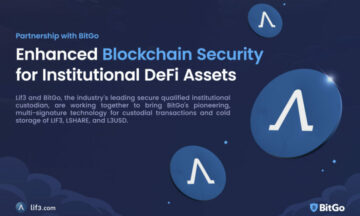
At present, a staggering 130 nations, collectively representing 98% of the global economy, have delved into exploring CBDCs (central bank digital currencies). The past six months have witnessed significant strides, propelling nearly all G20 countries into advanced phases of CBDC development. Moreover, a recent survey conducted in July 2023 projects that 24 central banks are gearing up to launch their CBDCs by the close of this decade. These developments undeniably underscore the mounting momentum of CBDCs as a technological and economic trend adopted by numerous governments worldwide.
Nonetheless, as with any innovation, potential risks come to the fore, and CBDCs are no exception to this rule. Concerns about their possible hazards have also gained prominence as they gain traction. This leads to a crucial question: are the benefits of CBDCs worth the potential challenges?
Addressing Privacy and Stability Concerns
Before delving deeper, let’s explore the common risks associated with CBDCs. Privacy issues are a paramount concern shared among crypto industry participants. Unlike typical cryptocurrencies, CBDCs are under central banks’ control and management in supply, issuance, and network operations. While this level of authority may be necessary for effective monetary policy, it raises queries about data privacy, allowing governments to collect information about their citizens. A January 2022 report from the UK’s House of Lords Economic Affairs Committee expressed apprehension that CBDCs could transform into “instruments for state surveillance.”
Beyond privacy matters, CBDCs could also risk individual nations’ financial stability and the global economy. For instance, they might disrupt the modern financial system by heightening the risk of digital bank runs, particularly during crises. As forms of central bank-issued digital currency, CBDCs can offer interest-bearing features or direct remuneration. If they provide more attractive rates than traditional banking options, depositors might shift funds from commercial banks to CBDCs. This sudden outflow could strain bank liquidity and erode confidence, potentially causing bank runs. This concern, highlighted by institutions like the European Central Bank, underscores the need for safeguards to mitigate the risk of CBDC-induced bank runs.
Balancing Risks and Benefits
Having examined potential risks, it’s essential to acknowledge CBDCs’ advantages to a diverse global economic landscape. With a staggering 1.4 billion unbanked individuals worldwide, CBDCs could serve as a tool for promoting financial inclusion. By requiring only a smartphone and internet connection to establish a digital wallet, CBDCs could break down barriers to basic financial services. Nations such as Egypt, the Philippines, Vietnam, and Mexico, grappling with high levels of unbanked populations, are researching CBDCs as a potential solution.
Unlike existing systems, CBDC transactions could provide real-time access to vital financial data, aiding central banks in making informed decisions about interest rates, liquidity management, and macroeconomic stability. Enhanced control over the CBDC money supply and improved visibility could lead to more efficient monetary policy implementation.
Furthermore, CBDCs have the potential to streamline transactions through peer-to-peer (P2P) mechanisms, reducing costs and processing times by eliminating intermediaries. Collaboration among banks in various countries is already propelling this concept into reality. Additionally, CBDCs could drive innovation in the payments sector, fostering the development of user-centric products. By leveraging blockchain technology, CBDCs could facilitate faster and more efficient transactions, paving the way for startups and fintech companies to create tailored solutions.
Balancing the Scale
Given the nascent nature of this technology and its immense impact on the future financial system, central banks must consider the potential risks of CBDCs to avoid detrimental scenarios. However, with a well-considered approach, the benefits of CBDCs could outweigh the potential challenges. Achieving this requires governments and regulators to raise awareness and engage in discussions about these challenges, ensuring the protection of citizens and economic stability. By mitigating risks and their potential consequences, CBDCs could emerge as a pivotal tool to propel the financial system into a new era.
Stablecoins: Anchoring the Dollar’s Global Dominance Amidst Economic
- SEO Powered Content & PR Distribution. Get Amplified Today.
- PlatoData.Network Vertical Generative Ai. Empower Yourself. Access Here.
- PlatoAiStream. Web3 Intelligence. Knowledge Amplified. Access Here.
- PlatoESG. Automotive / EVs, Carbon, CleanTech, Energy, Environment, Solar, Waste Management. Access Here.
- PlatoHealth. Biotech and Clinical Trials Intelligence. Access Here.
- ChartPrime. Elevate your Trading Game with ChartPrime. Access Here.
- BlockOffsets. Modernizing Environmental Offset Ownership. Access Here.
- Source: https://bitcoinworld.co.in/cbdcs-the-ultimate-tool-for-the-global-economy-or-a-significant-danger-to-financial-stability/
- 000
- 1
- 12
- 2022
- 2023
- 24
- a
- About
- access
- achieving
- Additionally
- adopted
- advanced
- advantages
- Affairs
- All
- Allowing
- already
- also
- amidst
- among
- and
- any
- app
- approach
- ARE
- as
- associated
- attractive
- attracts
- Authority
- avoid
- awareness
- Bank
- bank liquidity
- bank runs
- Banking
- Banks
- barriers
- BE
- benefits
- Billion
- BitcoinWorld
- blockchain
- blockchain technology
- break
- by
- CAN
- causing
- CBDC
- CBDCs
- central
- Central Bank
- central bank digital currencies
- Central Banks
- challenges
- Citizens
- close
- CO
- collaboration
- collect
- collectively
- come
- commercial
- committee
- Common
- Companies
- concept
- concern
- concerns
- conducted
- confidence
- connection
- consequences
- Consider
- Control
- Costs
- could
- countries
- create
- crises
- crucial
- crypto
- Crypto Industry
- cryptocurrencies
- currencies
- Currency
- Danger
- data
- data privacy
- decade
- decisions
- deeper
- depositors
- Development
- developments
- digital
- digital bank
- digital currencies
- digital currency
- digital wallet
- direct
- discussions
- Disrupt
- diverse
- dominance
- down
- drive
- During
- Economic
- economy
- Effective
- efficient
- Egypt
- eliminating
- emerge
- engage
- enhanced
- ensuring
- era
- essential
- establish
- European
- European Central Bank
- exception
- existing
- explore
- Exploring
- expressed
- facilitate
- far
- faster
- Features
- financial
- financial data
- financial inclusion
- financial services
- financial stability
- financial system
- fintech
- Fintech Companies
- Firm
- For
- For Startups
- forms
- fostering
- from
- funds
- future
- Futures
- gain
- gained
- Global
- Global economy
- Governments
- Have
- High
- Highlighted
- House
- however
- HTTPS
- Identifies
- if
- immense
- Impact
- implementation
- Improved
- in
- inclusion
- individual
- individuals
- industry
- information
- Innovation
- instance
- institutions
- interest
- Interest Rates
- intermediaries
- Internet
- into
- Is
- issuance
- issues
- IT
- ITS
- January
- July
- landscape
- launch
- lead
- leads
- Level
- levels
- leveraging
- like
- Liquidity
- Lords
- macroeconomic
- Making
- management
- Matters
- May
- mechanisms
- Mexico
- might
- mitigate
- mitigating risks
- Modern
- Momentum
- monetary
- monetary policy
- money
- months
- more
- Moreover
- must
- nascent
- nations
- nature
- nearly
- necessary
- need
- network
- New
- no
- numerous
- of
- offer
- on
- only
- open
- Operations
- Options
- or
- over
- p2p
- Paramount
- participants
- particularly
- Past
- paving
- payments
- peer-to-peer
- Philippines
- pivotal
- plato
- plato data intelligence
- platodata
- platogaming
- policy
- populations
- possible
- potential
- potentially
- present
- privacy
- processing
- Products
- projects
- prominence
- promoting
- propel
- propelling
- protection
- Provide
- queries
- question
- raise
- raises
- Rates
- real-time
- Reality
- recent
- reducing
- Regulators
- remuneration
- report
- representing
- requires
- Risk
- risks
- Rule
- runs
- safeguards
- Scenarios
- Sector
- serve
- Services
- shared
- Shiba
- shift
- significant
- SIX
- smartphone
- Social
- solution
- Solutions
- Stability
- Startups
- State
- Streamline
- strides
- such
- sudden
- supply
- surveillance
- Survey
- system
- Systems
- tag
- tailored
- Technological
- Technology
- than
- that
- The
- The Future
- The Philippines
- their
- These
- they
- this
- Through
- times
- to
- tool
- traction
- Trading
- traditional
- traditional banking
- Transactions
- transform
- trend
- typical
- ultimate
- unbanked
- under
- Underscore
- underscores
- unlike
- up
- users
- various
- Vietnam
- visibility
- vital
- Wallet
- way
- while
- with
- witnessed
- worldwide
- worth
- zephyrnet










